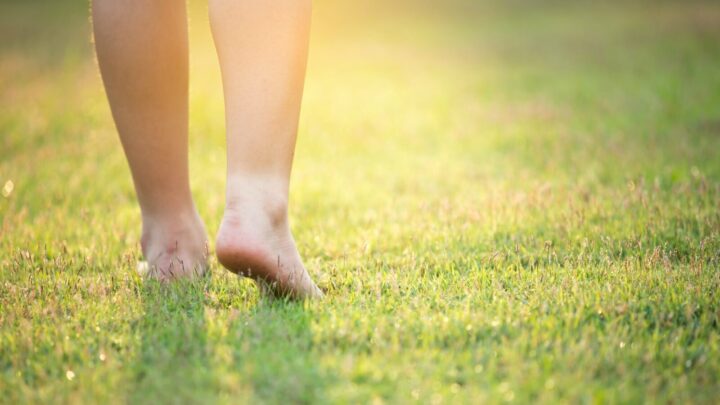
Have you ever experienced morning foot pain, swollen feet or dry, flaking skin but shrugged it off or simply put it down to ageing? This may sound a tad obvious, but you can find out a lot about your foot health by paying attention to your feet. That’s why we spoke to podiatrist, and ambassador for the Australian Podiatry Association, Charlotte Bodell to find out more. So the next time you come across one of these symptoms it may worth making a trip to your local GP or podiatrist.
We all experience dry, flaking skin from time to time, especially during the cooler months, but if the skin on your feet is drier than usual it could point to something a bit more serious. According to Bodell, dry, flaking skin is a common symptom for tinea, a fungal skin condition. The good news is, it can be treated by over-the-counter topical, anti-fungal creams.
“Then, it can also be eczema or psoriasis, which is a dermatitis skin condition,” Bodell adds. “And those conditions can be caused by stress.”
Bodell says this can generally [be] down to either an increase in exercise or wearing unsupportive footwear.
“For example, coming into summer, I’m going to get a lot more patients with heel pain and it’s because more people are wearing thongs,” she says.
Bodell says if you are experiencing morning foot pain you can go to the podiatrist who can then assess your footwear, give you exercises and a treatment plan. If the pain doesn’t improve, she says you may have to go down the road of having orthotics made for you, considering shock wave therapy or dry needling.
She says cold feet are usually the result of poor circulation. If you’re prone to cold feet, Bodell recommends keeping them nice and warm by popping on some slippers and two pairs of socks. She also advises against heating them up in front of the heater or popping them under a hot water bottle or electric blanket as it only makes it worse, explaining that once you get up to say go to the bathroom or head to another room your feet will get cold again.
“What this is actually doing, you’ve got super cold feet, you jump into bed or you’re putting them by a fire, they actually open up your capillaries because your feet warm up really quickly,” Bodell explains. “But then when you get up to go to the bathroom or the kitchen, your feet get cold again, so capillaries constrict. So you’ve got a shunting of blood going backwards and forwards, and this all part of having cold feet.”
Bodell says clawed toes can be caused by a number of reasons, with pointy heels being one of the main culprits. She says when we wear restricted heels, we tend to claw our toes because we’re squeezing them into those pointy shoes.
Bodell says it’s also common in people who use a walking frame, who have neuropathy (nerve damage) or wear shoes too big for them, explaining: “If you’re wearing shoes too big for you or wearing thongs, again you claw your toes to keep the shoe on your foot.”
Swelling, also known as edema, in your feet usually comes down to your veins not being able to pump blood properly, Bodell explains. If you do suffer from swollen feet, she recommends keeping them elevated when seated, and making sure you exercise at least twice a day — 15 minutes in the morning and 15 minutes in the afternoon. Not sure what to do? Bodell recommends starting off with calf raises, explaining that the calf muscle pushes blood flow back up to the heart. If the swelling persists, Bodell says you may need to consider purchasing surgical stockings or talking to your GP about medication to reduce fluid in your legs.